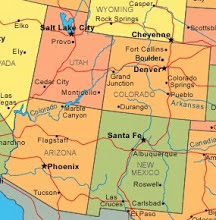By Steve Hammons
Jet fuel and other fuels made from algae are being developed in San Diego. Some of the research is being funded by the Defense Advanced Research Projects Agency (DARPA), part of the Department of Defense.
DARPA has provided $35 million to San Diego-based companies SAIC and General Atomics to pursue the creation of algae-based jet fuel.
This investment has triggered more interest in San Diego as a research hub for algae-based fuels. According to a Jan. 12, 2009, article in the San Diego Business Journal, “A consortium of academic researchers is pushing to make San Diego a hub for research on algae-based fuels, a task that, if successful, could pour more jobs and funding into the area.”
The article also noted that an associate dean at the Scripps Research Institute in La Jolla, Stephen Mayfield, is leading efforts to make the San Diego region a center for fuels created from algae.
Mayfield wants to establish joint activities that include the Scripps Research Institute, the Scripps Institution of Oceanography and University of California San Diego.
A “handful of companies” in San Diego are trying to create high-octane algae-based fuels, the article explained.
The funding provided by DARPA to General Atomics will also include Scripps Institution of Oceanography, which was enlisted by General Atomics to assist in the project.
MILITARY JET FUEL FOCUS
The DARPA money for SAIC could total up to $24 million to develop algae based military jet fuel JP-8 that costs $3 per gallon, according to an article on the Web site Earth2Tech.com. That is in addition to a $14.9 million contract also related to algae-based biofuels, the Web site reported.
Large energy companies like Shell and Chevron are also working on alternative jet fuels, Earth2Tech.com said.
According to Earth2Tech.com, “the military spent $6 billion on 71 million barrels of JP-8 in 2006.” The Defense Department wants to reduce that cost.
Earth2Tech.com also reported that the publication Defense News recently noted, “It’s no secret that jet fighters can fly on fuel extracted from algae. What’s not yet known, though, is how to squeeze oil from algae at a reasonable price.”
The Web site CleanTechnica.com also noted the interest in algae fuels. It reported, “SAIC says there will be two phases to the project. The first will involve refining the technology and developing lab-scale production capabilities. The second phase will involve the construction of what SAIC calls a pre-pilot scale production facility.”
CleanTechnica.com also stated, “SAIC will do the work at company facilities in Georgia, Florida, Hawaii and Texas. The company will work with a team of industrial and academic partners."
In addition, CleanTechnica.com explained, “DARPA is looking to reduce the military’s dependence on traditional forms of fuel, which makes sense from both an economic and strategic standpoint. While it remains to be seen if farmed algae provides an answer to the military’s energy needs.”
ALGAE VS. CROP-BASED BIOFUELS
Aguaculture-based biofuels may have advantages over corn and other crop-based fuels.
Critics of corn-based biofuels have claimed that as much energy is need to fertilize, grow and harvest corn as is derived from corn-based biofuel.
Research efforts to find ways of breaking down the cellulose in other plants are underway. Progress in this area would allow many other types of high-yield plants and plant waste products to be efficiently converted to biofuels.
“PetroSun opened the first algae to biofuel facility in the U.S. last April. Such operations don’t require the crop land that corn or switchgrass use, and can produce as much as 100 times more energy per acre than crop-based biofuels,” CleanTechnica.com reported.
Growing and harvesting algae also has unique challenges.
According to an SAIC press release, “SAIC and its team will develop technologies and processes to help achieve DARPA's goal including integrating algae strain selection, water and nutrient sourcing, farming, harvesting, separation, triglyceride purification, algal oil processing, and economic modeling and analysis.”
SAN DIEGO HUB
The Web site Xeconomy.com also found the project significant. The site stated that “the San Diego region is undertaking a broad initiative to accelerate development of algae-to-biofuels technology by establishing a new organization, the San Diego Center for Algae-based Biofuels, or SD-CAB.”
Xeconomy.com that, “The center is being organized by a consortium of academic and industry researchers and represents a regional effort to make sustainable algae-based biofuel production a reality in the next 5 to 10 years.”
According to the Web site, Steve Kay, dean of biological sciences at UC San Diego, said that a “collaborative effort” getting the center going was an outcome from the non-profit membership group “Cleantech San Diego.” That group began in 2007, a combination of local government and regional economic development activities.
The Web site also claimed that “at least nine companies in the San Diego area that are working to develop algae-based substitutes for conventional petroleum products.”
skip to main |
skip to sidebar

In the past 30 days, readers from approximately 40 countries or territories using about 20 languages visited the Joint Recon Study Group site.

To see more articles, scroll down the right-side column.

Steve Hammons

Articles from the Joint Recon Study Group site and Transcendent TV & Media site are included.
The Joint Reconnaissance Study Group is the San Diego-based, combined-service/agency, research-and-activities team in my novels "Mission Into Light" and sequel "Light's Hand." This site contains information of interest to the JRSG.
Home page: Joint Recon Study Group site
Readers from around the world visit this site.

In the past 30 days, readers from approximately 40 countries or territories using about 20 languages visited the Joint Recon Study Group site.
April 2021 threat alert: ‘Force protection’ for our troops now the responsibility of all Americans
First responders must deal with society’s problems, shortcomings, injustices every day
Could some UFOs be linked to Native American 'white stone canoe' legends, stories?
Wildland firefighter basic training available at community colleges, tech schools, training centers
‘Boomer remover’ coronavirus is bigger threat to WWII generation that saved the world
‘Black swan’ events that aren’t: Coronavirus, climate emergency, unidentified aerial phenonema
Reagan’s complete 1987 UN message on ‘alien threat’ overlooked: Grave danger here, now
Was Reagan briefed about UFOs and original ‘Day the Earth Stood Still’ movie?
My military draft lottery number was #165 during final Vietnam War years
“Keep On The Sunny Side,” by The Whites, from movie O Brother, Where Art Thou?”
Living along Ohio River for centuries, Native Shawnee called it ‘Kiskepila Sepe’ – ‘Eagle River’
Native American words around us: States, towns, rivers, lakes, terrain, plants, animals, military
Athens County, Ohio, was key spot when colonists, Redcoats fought Shawnee in 1774 battle
1787 Northwest Ordinance set course for Ohio, Indiana, Illinois, Michigan, Wisconsin, Minnesota
Smallpox-tainted blankets were 1763 bioweapon on northern Appalachian Mountains frontier
Diana Krall performs “Maybe You’ll Be There" live in Paris with Paris Symphony Orchestra 2001.
Books to read in 2021? Novels "Mission Into Light" and the sequel "Light's Hand"
Novel excerpt: Renew, prepare America with ‘Urgent Response Group’ for teens, young adults
Diana Krall performs “I Get Along” live in Paris with Paris Symphony Orchestra 2001.
Steve Tyrell sings “Give Me the Simple Life.”
Diana Krall performs “Love Letters” live in Paris with Paris Symphony Orchestra 2001.
Visit the article archives!

To see more articles, scroll down the right-side column.
Novel "Mission Into Light" overview on Amazon
Novel "Light's Hand" overview on Amazon
Adventures of the Joint Recon Study Group: Overview and synopses of activities and operations
Key chapter overviews: Points of interest in the novel "Mission Into Light"
Key chapter overviews: Points of interest in the novel "Light's Hand"
Multimedia rights available
English and foreign-language book rights, audio book and e-book rights for "Mission Into Light" and "Light's Hand" are available. Movie and TV rights are available.
I'm seeking agent representation for these works and rights.
Please contact Steve Hammons for more information at hammons55@gmail.com.
Feature film screenplay
I completed a feature film screenplay in 2006 based on “Mission Into Light” and “Light’s Hand” combining key elements of both novels.
The screenplay takes audiences into the adventures and discoveries of the Joint Recon Study Group and the relationships among team members, friends and associates as they explore leading-edge research and emerging transcendent developments.
I'm seeking agent representation for this screenplay.
.........................
I also wrote a TV series pilot script based on "Mission Into Light" and "Light's Hand" story. I'm seeking agent representation this script.
About the Author

Steve Hammons
About the Author
I was born and raised in southwestern Ohio near the Kentucky and Indiana borders, then went to college at Ohio University in the southeastern Appalachian region of the state near West Virginia.
I graduated with a dual major in communication (journalism focus) and health education (psychology focus) with a minor in pre-law.
Ohio U. is home to the respected Scripps College of Communication and E.W. Scripps School of Journalism.
I also completed two graduate-level courses in guidance counseling theory and method at Ohio U.'s College of Education, School of Applied Behavioral Sciences and Educational Leadership.
At the end of my undergraduate education at Ohio University, I moved to the beautiful American Southwest where I applied my education, continual training and and ongoing experience to related professional fields such as health care, journalism and special research areas.
My novels "Mission Into Light" and the sequel "Light’s Hand" are available in e-book and 6"x9" paperback from most online booksellers worldwide.
Readers review metaphysical-military-intelligence adventure novel ‘Mission Into Light’
My articles on DoD CultureReady blog, Defense Language and National Security Education Office
Transcendent TV & Media site
Past articles: Scroll down the right-side column for more articles.

Articles from the Joint Recon Study Group site and Transcendent TV & Media site are included.
New films, TV series, books tell stories of ‘Ohiyo’ River Appalachian mountain region
Hillbillies, pioneers and UFOs: Current major media projects explore southern Ohio
Well-known ‘Mothman’ case also about dedicated local journalist, Native history?
Film experts, fans celebrate rediscovery of Appalachian story ‘Spring Night Summer Night’
'Hillbilly' J.D. Vance, columnist Clarence Page find common ground in southwest Ohio roots
‘Phoenix lights’ UFO linked to multiple incidents around four-state Colorado Plateau?
UFOs, odd phenomena reported on perimeter of Colorado Plateau
Theory about 37th parallel and UFOs sparked book, TV shows, film concept
Sketchy dimensions: UFO investigations reveal need for caution, potential for beneficial discovery
Can UFO-acquired technologies help the U.S. economy?
Many Americans have Cherokee in the family tree
Americans with Cherokee roots can't rely on government bureaucracies to define them
Government-approved Cherokees don’t tell whole story?
Does tribal government politician speak for all Americans with Cherokee ancestry?
‘Official Cherokees’ disrespecting mixed-ethnicity Americans?
Could ‘Hillbilly Elegy’ author J.D. Vance have Appalachian Cherokee ancestry?
Journalism’s dilemma: Covering weird science
Movie ‘Sedona’ explores metaphysical mysteries, Nature’s beauty, human heart
Novel excerpt: Insight, understanding not always found in official reports, documents
Novel excerpt: From Sedona to Heaven – What is the dimension we call ‘Heaven?’
Interest grows in healthy aging, anti-aging, reverse-aging, transcendent aging
Analysis: Research company involved with UFOs opens up about activities
Startup company researching advanced tech, UFOs gives updates during Q&A
Leverage US resources to understand unknown objects encountered by Navy, defense expert says
US Navy UFO encounters: Space scientists speculate on ‘first contact’ with visitors
UFOs in the heartland: New movie, ‘Blue Book’ TV series set in southwestern Ohio
Year of UFOs, 1952, may play role in Disney movie ‘Tomorrowland’
UFO situation awareness: Phoenix conference hosts scientists, researchers, media, public
Appropriate security on UFOs probably 2-way street
Roswell was ET crash, says ex-CIA officer – what’s been going on since 1947?
Alleged briefing to Pres. Reagan: Original ‘Day the Earth Stood Still’ was UFO acclimation?
Beyond UFOs and extraterrestrials: Human consciousness
Journalism in media mix: New shows ‘Chasing UFOs,’ ‘Spacing Out’ help prepare public
Further UFO disclosure requires readiness, teamwork, education, intelligence
Disclosure, acclimation, security work together on UFO, ET challenges
Up to speed on UFOs and intelligent visitors? Revised ‘A.D. After Disclosure’ book released in May
Authors Zabel, Dolan explore adjusting to UFO truths in new book ‘A.D. After Disclosure’
Blog Archive
-
▼
2009
(34)
-
▼
February
(8)
- Beyond soft power and smart power: Transcendent power
- Deploy soft power communication on human conscious...
- Arizona film, TV projects explore unusual topics, ...
- Should U.S. government release more data on UFOs?
- New intel group IARPA should explore soft power
- Funding for ‘soft power’ R&D needed now
- DARPA, In-Q-Tel can expand efforts for U.S.
- Algae-based jet fuel gets DARPA funding
-
▼
February
(8)































































































































































































